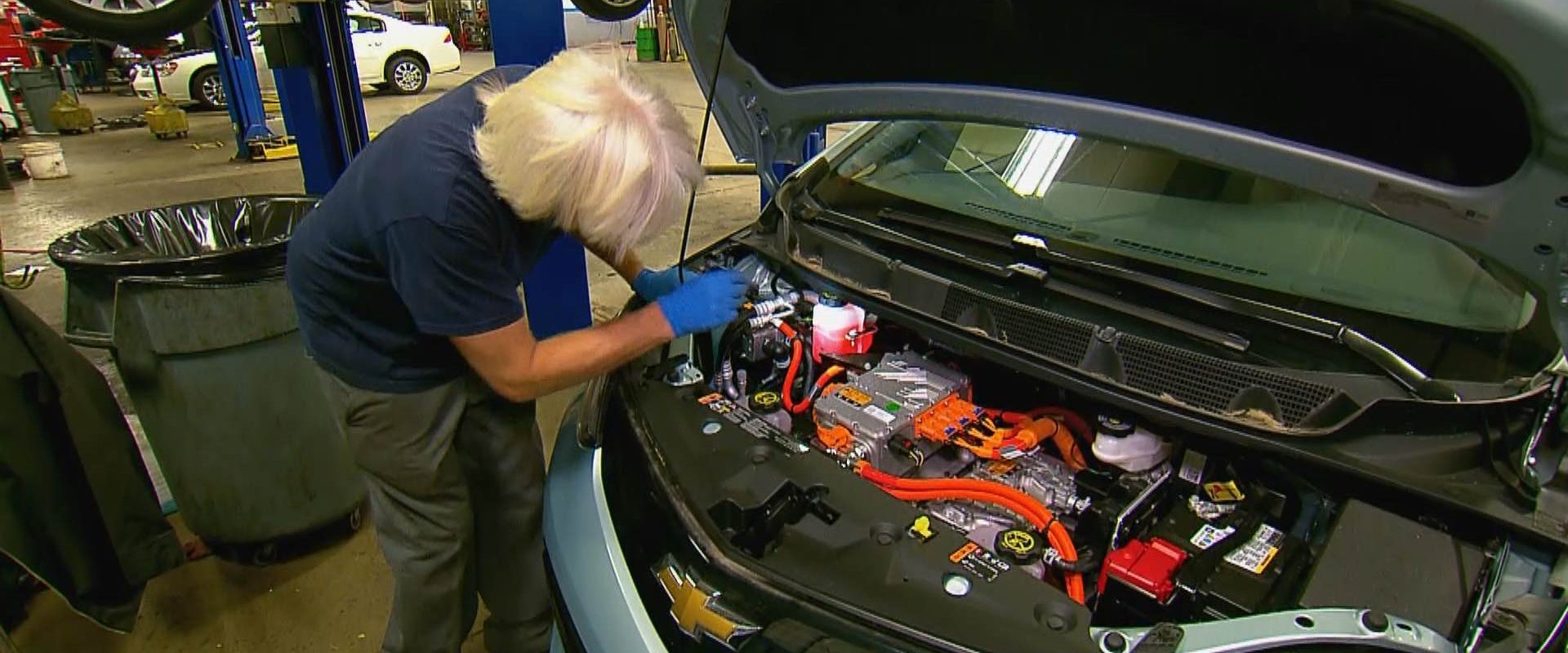EV Tech Training
A shortage of qualified auto repair technicians has been an industry-wide problem for years now, but the high-tech nature of today’s advanced safety systems and high-voltage EV architectures are attracting a new generation of tech trainees to maintain the cars of tomorrow.
TODD RENFRO: “In the market today, automotive technician training is extremely important. For every seven technicians that are leaving our industry, we’re only having two come in to replace them. And unfortunately, the information we have at this time is, one of those two won’t make it past 12 months. So, we need to get young people excited about the automotive trade, all the opportunities that are in the automotive trade, and get them started in a path of career to be successful.”
As the number of electrified vehicles on the road increases, dealerships and independent shops alike are pushing to be ready for their service needs. But working around electrified vehicles means following very specific safety protocols for the high voltage systems and learning a whole new type of vehicle architecture. So, across the country, vocational schools big and small are adding electrified vehicle training into their curriculums.
Utah’s Weber State University has been teaching hybrid and electric systems to their students for nearly 20 years, and they also share their experience with technicians, educators and the general public in a unique five-day EV bootcamp, funded in part by the U.S. Department of Energy with the Utah Clean Cities and Communities Coalition.
JOHN KELLY: “I would say that for the last five or six years, probably half of the students coming through the class are teachers at other colleges and universities, high schools, technical programs that are interested in starting an EV or hybrid training program at their location, and are coming here to see how we do it. So that gives them a lot of ideas. They can go back, they may or may not have the same vehicles that we have, but it gives them an idea of what type of activities can they do at their school to, uh, enhance learning with their students.”
Like with conventional vehicles today, OEM-specific systems and procedures may have to be learned on the job, but weber’s program takes a universal approach, starting with the basics of high voltage wiring, and how battery electric vehicles work.
BRANDON STEVENSON: “Every OEM has their own common components, but they are named differently. So, unless you understand what that component actually does, it is a struggle. So, with our students that are already technicians, they’re coming in because they don’t know how all of the different OEMs work and they actually want to know it.”
And while new EV models continue to arrive on the market, remember that EVs and hybrids have been around for quite a while now, so there’s plenty of service experience to draw from.
BRANDON STEVENSON: “So, when you’re looking at where the industry is going and where it has come from, we’ve got a 2002 Toyota Prius in there now that’s 22 years old. That sounds like it’s really old and outdated, but it actually has a lot of technology that is still leveraged today. So, we’re able to show students where we were back in 2002 to where we are now in 2024.”
As the market share for plug-in vehicles grows, related jobs will open up as well over the next few decades, like electricians to install EV chargers, battery engineers and software developers, creating opportunities for existing workers to retrain, and appealing new career paths for the next generation to drive forward.
TODD RENFRO: “The excitement about EV, and also with hybrid, is that it’s the future. It’s what’s coming down the road. So, to be ahead of the curve and be prepared for that future, is exciting to a lot of the young students.”







